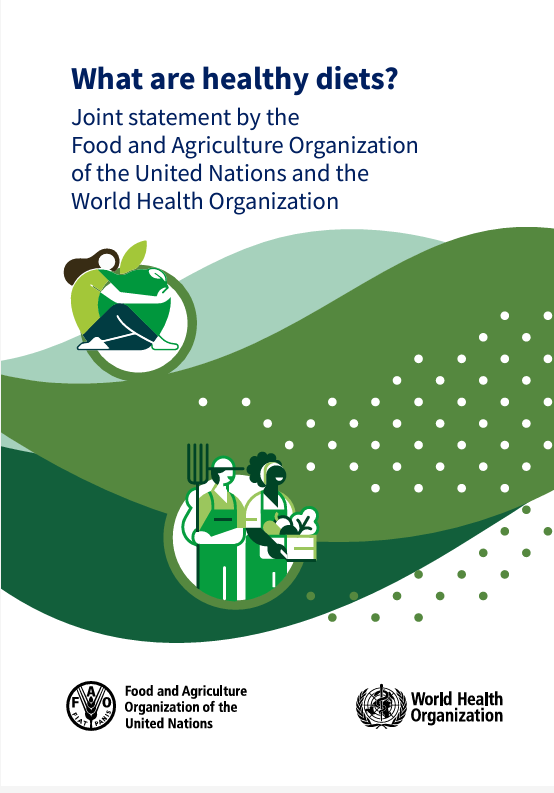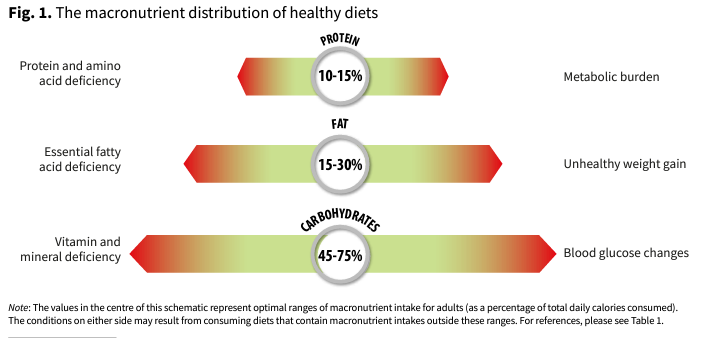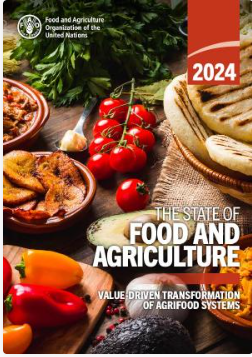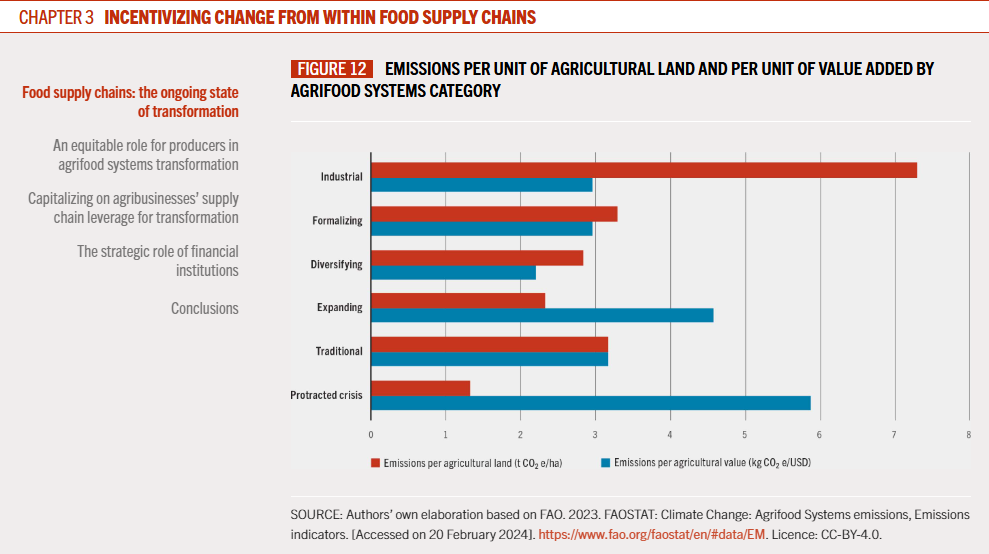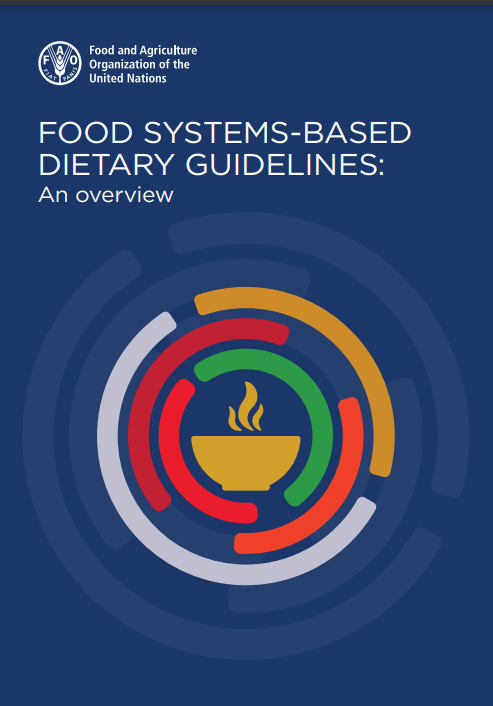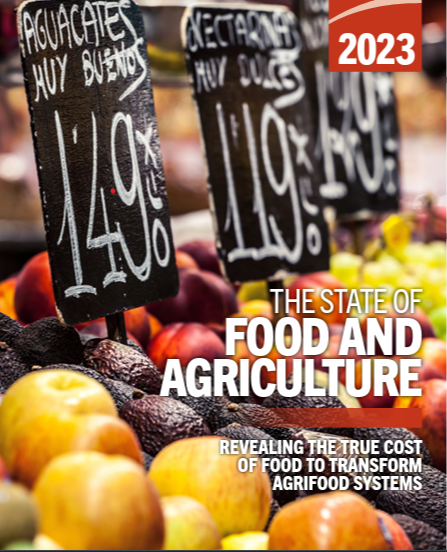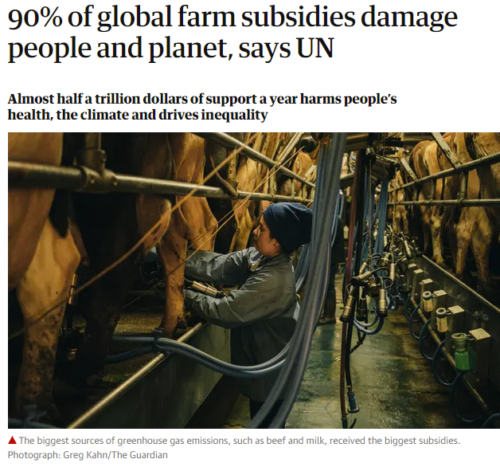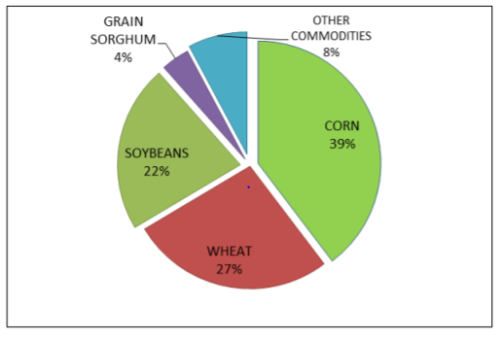Weekend reading: FAO’s Statistical Yearbook 2024
Here’s the announcement:
The Food and Agriculture Organization of the United Nations (FAO) today launched its 2024 Statistical Yearbook, offering an in-depth overview of the most significant trends shaping global agrifood systems. This year’s edition highlights critical challenges, including increased temperatures over land, the ongoing global struggle with food insecurity alongside increasing obesity rates, and the environmental pressures faced by agricultural production….
The 2024 Statistical Yearbook is also available in a digital, interactive format and comes with a companion pocketbook, offering a clear reference to key data on agriculture, food security, and sustainability. It is part of FAO’s ongoing effort to improve data accessibility, complementing the FAOSTAT platform, which hosts the world’s largest collection of free agricultural statistics, covering over 245 countries and territories.
It’s got great graphics. One example:
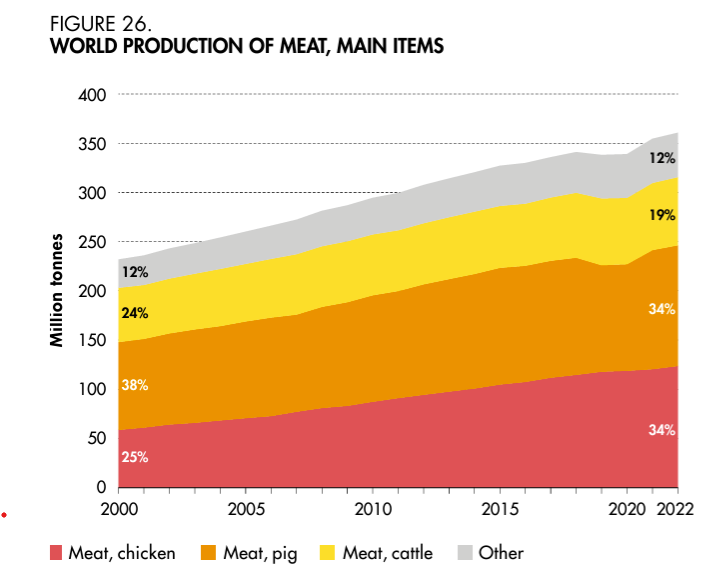
A few highlights:
- The value of global agriculture: $3.8 trillion in 2022.
- Proportion of global workforce employed in agriculture: a decrease from 40% in 2000 to 26% in 2022.
- Hunger remains persistent: In 2023, between 713 and 757 million people were undernourished, 152 million more people than in 2019. Most are in Asia and Africa.
- Obesity is rising: More than 25% of adults in the Americas, Europe and Oceania are obese.
- Meat production increased by 55% from 2000 to 2022, with chicken accounting for the largest share of this rise.
- Pesticides increased by 70% between 2000 and 2022, with the Americas accounting for half global pesticide use.
- Vegetable oils grew by 133 percent between 2000 and 2021, largely driven by an increase in palm oil production.
- Greenhouse gas emissions from agrifood systems rose 10% between 2000 and 2022, with livestock contributing to around 54% of farmgate emissions.
- Kuwait, the United Arab Emirates and Saudi Arabia are withdrawing each year 9 to almost 40 times their renewable freshwater resources available.
Comment: Food systems need immediate transformation to become healthier and more sustainable.

